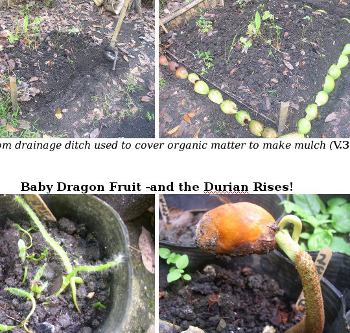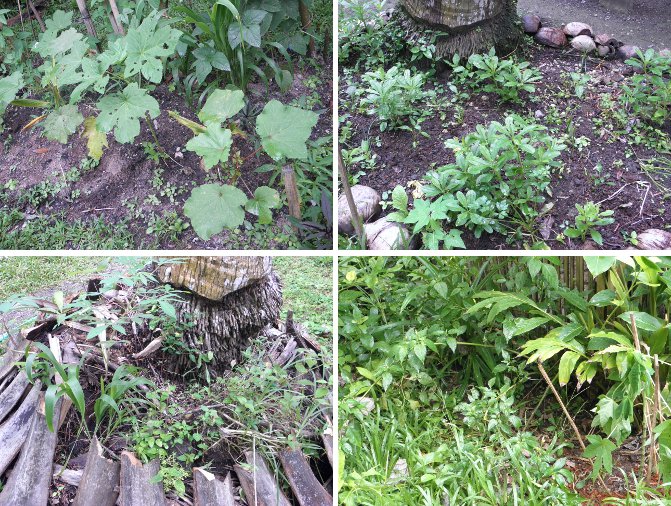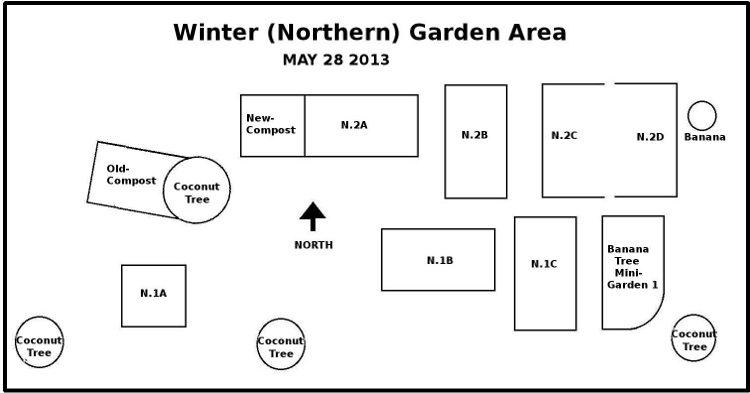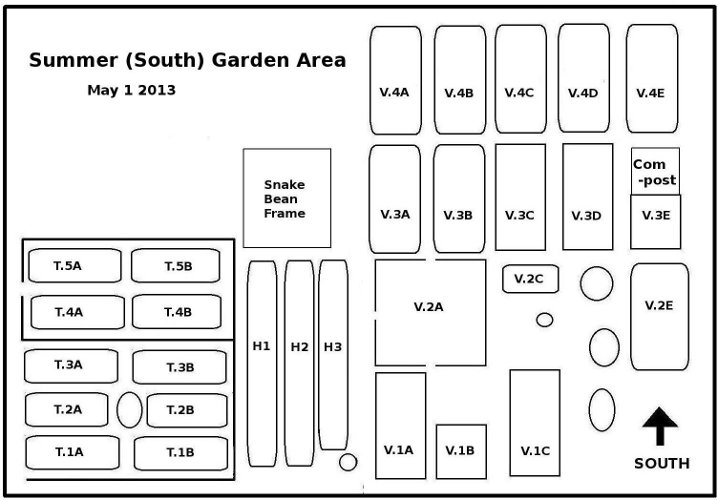A few people have commented that
they find the Garden Diary nice. I generally respond that I'd
like to go beyond "nice". However, I have to admit that I
cannot define clear intentions regarding what that "beyond" might be.
Originally, I was hoping to create a high-yield, low-effort,
supply of food -without fertilizer of pesticides. I felt
certain that various plants could help each other to grow,
rather than be in constant competition with each other as
standard doctrine dictates. Initially, I thought this was
entirely my own idea -but then I discovered that others had
similar ideas (particularly Masanobu
Fukuoka -who invented "Natural Farming" in Japan).
Although we have had a few snacks from the garden -it is
obvious that we would starve
if we relied upon it for our food production. However, this does
not signal a failure -it is still early days: I've been told
that it can take from 5-10
years to create a productive "Natural Garden". It is
also difficult to define exactly how long we have been working
of the garden. The Deed of Sale was
signed early May 2010. Then we had to build the house. November 2010 we moved in
permanently. In January
and February 2011 there
was intensive rain
(perhaps the result of volcanic
action in the region) which wiped out the first
attempts. The first priority was also to develop hedges around
the perimeter to replace the temporary bamboo fence. This wasn't
too easy either: May is
usually a very hot and dry
month, and plants that are not well established will
suffer. Also some areas of the hedge are in the shade, directly
under trees (which may drop branches or even coconuts) -are
around bamboo clumps or tree stumps, in stony areas or next to
Mahogany trees (which tends to poison other plants). At the same
time, several attempts to grow seeds under the prevailing
conditions failed completely. A serious attempt to develop an
edible garden didn't really start until February 2013 -with the
start of the Diary (and the purchase of "Heritage"
seeds from the US.
The motivation for all
this work is perhaps threefold:
1.
A belief that rural poverty
can be relieved by "homesteading" -i.e. the production of
plants and animals for domestic consumption -outside a cash
economy. It is my belief that it is the cash economy (particularly in cities)
that causes poverty. It
seems to me that many (local) people suffer because they have
lost the rural life-style of
their parents -while having no real function (other than consumer) within the current global socio-economic
system. This is socially relevant.
2. An interest in the
interactions between the elements of natural systems. I see plants and animals (and maybe even people) as being analogous with the "autonomous"
elements found in my programmed art works. This is of more
personal relevance -but not entirely -because both the garden
and my art-works can also be seen as studies for social
models.
3. Promote more serious
interest and understanding for
rural systems:
Not only to prevent their destruction in order to satisfy
the needs of city folks dependent on the global socio-economic system
-but also to give a sense of pride
to local people, plus a feeling of what can be achieved at low cost with a little
concentrated effort.
Regarding the last case -it is encouraging if people do find the
results nice
- although, I still hope we can move beyond that into some practical interest and
understanding of the dynamic interactions implicit in natural
processes -by non-professionals.
-It is time to stop seeing the
world only in terms of exploitable resources: Bio-diversity,
shouldn't just be a handy euphemism for continued economic
exploitation!
B. Notes on the basic
practice:
The most important point is that
the entire project is an experiment.
I have almost no previous experience in gardening -only
programming "Computer Art".
When we arrived, the "garden"
was rather more like a jungle than a garden. Early attempts to
grow crops in a small part of the land failed -when the area got
flooded and almost all the "crop"
destroyed. Our first priority was to encourage plants (grass -but also taro) that
would absorb the run-off and help prevent flooding.
Generally, the land seemed either full of stones -or clay.
Neither of which seemed very fertile. The stones obviously
provided insufficient nutrients and were too dense to allow a
healthy root growth. The clay retained excess water which (literally) swamped young
plants -or else it quickly dried out to become a natural version
of cracked concrete.
Basic Strategy:
My basic strategy was simple:
1. Try to get something (anything)
to grow (somewhere).
2. Try to get
something that I wanted
to grow, growing somewhere.
3. Try to see under
what conditions the various plants liked to grow -and
what liked to grow where (and with which other plants).
4. See if I could get
what I wanted to grow, to grow in the places that I wanted
them.
I guess that at the moment (December 2013), I am now at stage 3.
C. Notes on the
Four types of planting Areas:
1.
Garden Plot: Normal planting area. Originally dug up
to remove weeds and then coconut husk mixed in with soil to
provide a composted planting area.
2. Mini-garden: After
defining the area with some kind of boundary, fresh earth (mixed with coconut husks)
is dumped upon stony earth and planted.
3. Compost Area:
Generally, but not always, around existing trees. Organic waste
is dumped and left to rot. As the material decomposes, various
seeds, seedlings or cuttings are planted in the area. These
areas are often slow to develop, not only because of the time it
takes for the material to rot -but also because of destruction
caused by chickens rooting for grubs -and sometimes humans
continuing to dump waste on newly planted, or growing, areas.
4. Wild Area: These are
areas that are not prepared for planting -but have been planted
with seeds or cuttings directly. Weeds and various other plants
are basically left to look after themselves.
D. Two (Slightly out of
date) Maps of the main Garden Areas:
E. Future
Suggestions:
Focus more on results of
processes: Look at plots to decide seeds -rather than seeds to
decide plots.....
Build up complexity in layers. First sow one type (
group) of plants thinly,
then later (
when established)
sow others that fit in into available space (
more maintenance ?)
Investigate?
-(tropical) cover plants
-(tropical) green
manure
-(tropical) herbs (in
pots)?
-tropical grains
-tropical root crops
-Pioneer plants
-Crop Rotation
Trevor Batten
<trevor at
tebatt dot net>
Baclayon 2013
home
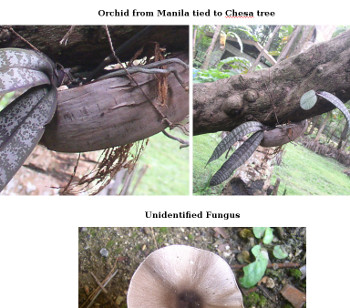 January:
February:
January:
February: 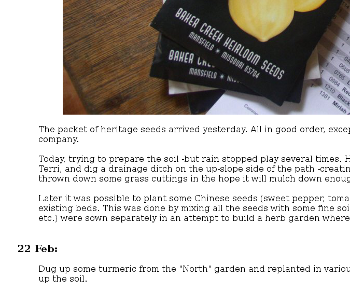
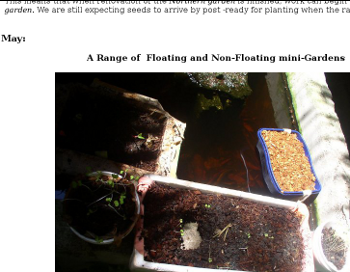 May:
June:
May:
June: 